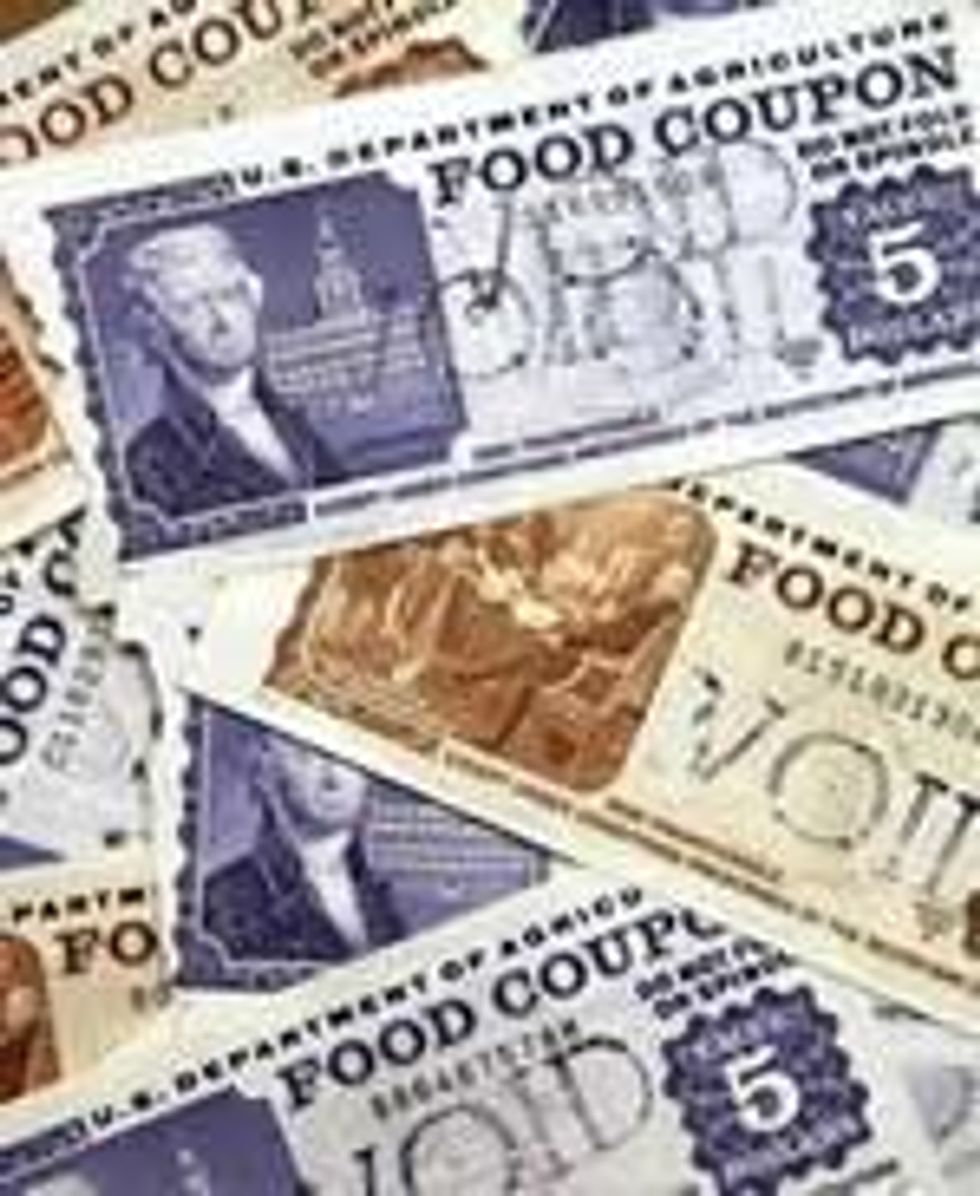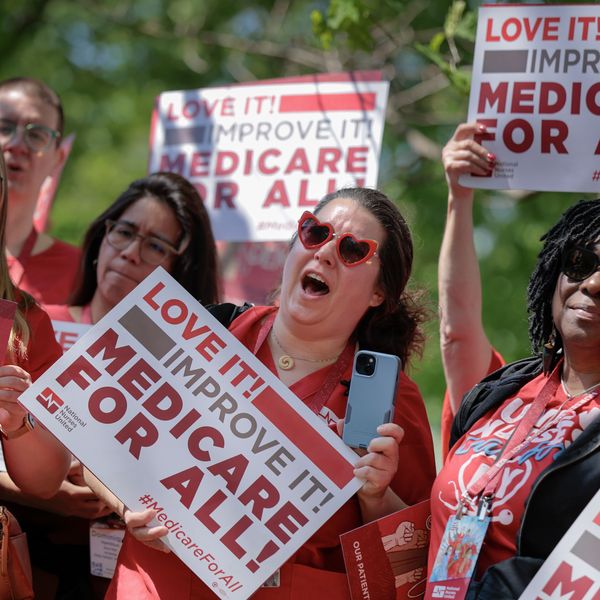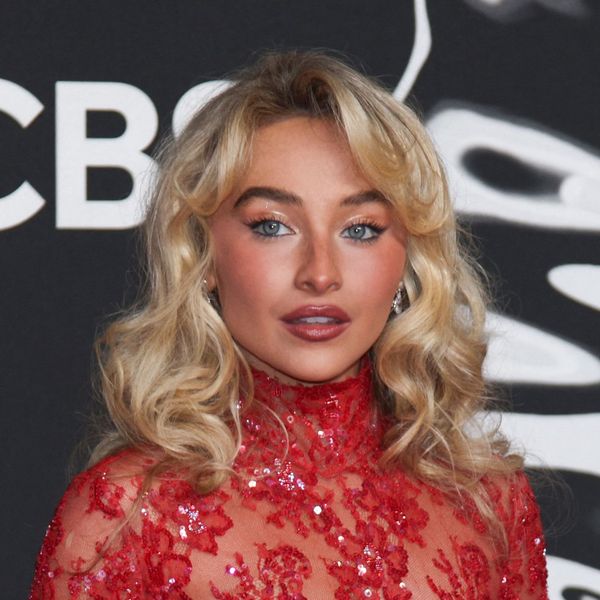Debunking Poverty Myths and Racial Stereotypes
A Better Understanding of Social Benefit Programs
Race baiting has been a focus of debates in various media outlets about programs aiding those whose income is at the pit of that debate. Below are some of the most startling facts that debunk some of the poverty myths and racial stereotypes that surround social benefit programs.

2. Blacks are not the primary recipients of assistance through federal benefit programs. 35.7 percent of Supplemental Nutrition Assistance Program, or SNAP, recipients and 43 percent of those on Medicaid--two of the largest public benefit programs--are white.
3. The main reasons why people living in poverty are not employed are illness and inability to find work. Approximately 56 percent of those who did not work in 2010 did not work due to illness, disability, retirement, or an inability to find work.
4. Social Security benefits have saved many senior citizens from poverty. If Social Security were excluded from income, 14 million seniors over the age of 65 would fall into poverty.
5. Many Americans receiving public benefits paid for them. Thirty-nine percent of Americans receive benefits they paid for through payroll taxes taken out of their own paychecks.
6. More white Americans live in poverty than any other group. In 2010 31.6 million white Americans lived in poverty, more than any other racial or ethnic group.
7. Many people of color who receive Social Security benefits do so for survival. Forty-five percent of all black beneficiaries and 58 percent of "other" beneficiaries (those who are neither black nor white) use the program for its survivor and disability benefits, not for its retirement benefits.
8. Social benefit programs like Medicaid really do serve those most vulnerable. Two-thirds of Americans living in poverty are not enrolled in Medicaid because single individuals and childless couples are largely excluded from Medicaid coverage.
9. Many beneficiaries of low-income public benefit programs are elderly, children, or disabled. Among American households receiving food assistance under SNAP, 75 percent have an elderly or disabled person or a child.
10. The federal government does not hand out checks. Only about 10 percent of all federal dollars committed to public benefit programs for low-income Americans are paid in cash, and the majority of cash assistance programs are focused on those who cannot work.
An Urgent Message From Our Co-Founder
Dear Common Dreams reader, The U.S. is on a fast track to authoritarianism like nothing I've ever seen. Meanwhile, corporate news outlets are utterly capitulating to Trump, twisting their coverage to avoid drawing his ire while lining up to stuff cash in his pockets. That's why I believe that Common Dreams is doing the best and most consequential reporting that we've ever done. Our small but mighty team is a progressive reporting powerhouse, covering the news every day that the corporate media never will. Our mission has always been simple: To inform. To inspire. And to ignite change for the common good. Now here's the key piece that I want all our readers to understand: None of this would be possible without your financial support. That's not just some fundraising cliche. It's the absolute and literal truth. We don't accept corporate advertising and never will. We don't have a paywall because we don't think people should be blocked from critical news based on their ability to pay. Everything we do is funded by the donations of readers like you. Will you donate now to help power the nonprofit, independent reporting of Common Dreams? Thank you for being a vital member of our community. Together, we can keep independent journalism alive when it’s needed most. - Craig Brown, Co-founder |
Race baiting has been a focus of debates in various media outlets about programs aiding those whose income is at the pit of that debate. Below are some of the most startling facts that debunk some of the poverty myths and racial stereotypes that surround social benefit programs.

2. Blacks are not the primary recipients of assistance through federal benefit programs. 35.7 percent of Supplemental Nutrition Assistance Program, or SNAP, recipients and 43 percent of those on Medicaid--two of the largest public benefit programs--are white.
3. The main reasons why people living in poverty are not employed are illness and inability to find work. Approximately 56 percent of those who did not work in 2010 did not work due to illness, disability, retirement, or an inability to find work.
4. Social Security benefits have saved many senior citizens from poverty. If Social Security were excluded from income, 14 million seniors over the age of 65 would fall into poverty.
5. Many Americans receiving public benefits paid for them. Thirty-nine percent of Americans receive benefits they paid for through payroll taxes taken out of their own paychecks.
6. More white Americans live in poverty than any other group. In 2010 31.6 million white Americans lived in poverty, more than any other racial or ethnic group.
7. Many people of color who receive Social Security benefits do so for survival. Forty-five percent of all black beneficiaries and 58 percent of "other" beneficiaries (those who are neither black nor white) use the program for its survivor and disability benefits, not for its retirement benefits.
8. Social benefit programs like Medicaid really do serve those most vulnerable. Two-thirds of Americans living in poverty are not enrolled in Medicaid because single individuals and childless couples are largely excluded from Medicaid coverage.
9. Many beneficiaries of low-income public benefit programs are elderly, children, or disabled. Among American households receiving food assistance under SNAP, 75 percent have an elderly or disabled person or a child.
10. The federal government does not hand out checks. Only about 10 percent of all federal dollars committed to public benefit programs for low-income Americans are paid in cash, and the majority of cash assistance programs are focused on those who cannot work.
Race baiting has been a focus of debates in various media outlets about programs aiding those whose income is at the pit of that debate. Below are some of the most startling facts that debunk some of the poverty myths and racial stereotypes that surround social benefit programs.

2. Blacks are not the primary recipients of assistance through federal benefit programs. 35.7 percent of Supplemental Nutrition Assistance Program, or SNAP, recipients and 43 percent of those on Medicaid--two of the largest public benefit programs--are white.
3. The main reasons why people living in poverty are not employed are illness and inability to find work. Approximately 56 percent of those who did not work in 2010 did not work due to illness, disability, retirement, or an inability to find work.
4. Social Security benefits have saved many senior citizens from poverty. If Social Security were excluded from income, 14 million seniors over the age of 65 would fall into poverty.
5. Many Americans receiving public benefits paid for them. Thirty-nine percent of Americans receive benefits they paid for through payroll taxes taken out of their own paychecks.
6. More white Americans live in poverty than any other group. In 2010 31.6 million white Americans lived in poverty, more than any other racial or ethnic group.
7. Many people of color who receive Social Security benefits do so for survival. Forty-five percent of all black beneficiaries and 58 percent of "other" beneficiaries (those who are neither black nor white) use the program for its survivor and disability benefits, not for its retirement benefits.
8. Social benefit programs like Medicaid really do serve those most vulnerable. Two-thirds of Americans living in poverty are not enrolled in Medicaid because single individuals and childless couples are largely excluded from Medicaid coverage.
9. Many beneficiaries of low-income public benefit programs are elderly, children, or disabled. Among American households receiving food assistance under SNAP, 75 percent have an elderly or disabled person or a child.
10. The federal government does not hand out checks. Only about 10 percent of all federal dollars committed to public benefit programs for low-income Americans are paid in cash, and the majority of cash assistance programs are focused on those who cannot work.

